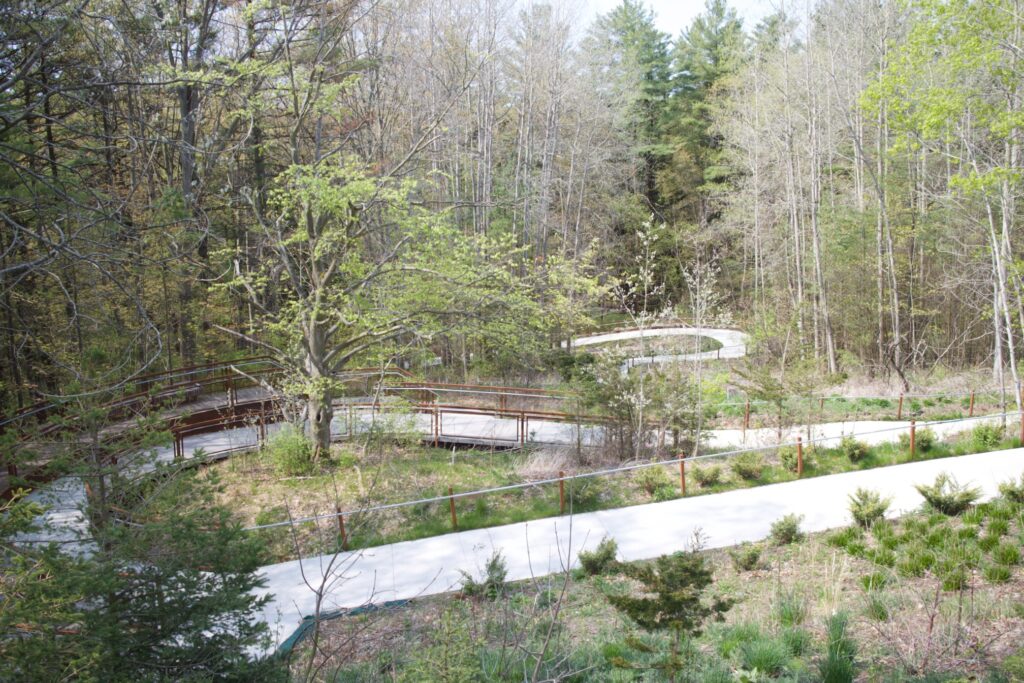
The Campus Valley Land Trail, located on the University of Toronto Scarborough campus, is a 600-metre accessible connection from the campus at the top of the valley down to the trails of Highland Creek Valley.
The trail uses accessible design to be inclusive; there is a maximum of 5% slope on the main winding trail that zigzags its way around, avoiding points of high ecological importance like trees or rocks that host a lot of wildlife within or around them. The trail is equipped with weather-proof wall outlets around the trails so that people using mobility devices can recharge them if they run out of power while making their way to the campus.

When designing the trail, the walk takes a very long and non-direct path from the valley to the campus to reach the target goal of a 5% grade throughout the trail. The designers included a shortcut that cuts out 500 metres of the walk that late university students could use to skip most of the long trail.
To build the trail, they had to remove a lot of forest ground to move in the heavy equipment. Right now, the stewards are in the process of replanting the natural flora and seeing the wildlife come back. One unintended consequence was that all the trees used to protect each other from the wind. But once a stretch of trees was suddenly removed to construct the trail, the trees on the edge of the path started to experience heavier wind loads, and multiple trees fell because of the change in the forest. The wind-blown trees and the failure of some planted trees in place of the ones removed mean that multiple years after the construction is finished, the stewards of the trail need to return and replant more vegetation to make up for the losses.

The wildlife around the trails was a concern for the stewards of the trail and the adjunct land, but they have found that letting nature take its course and not interfering with the path Mother Nature wants to take is the best way to manage the trail ecosystem. One example of the ecosystem taking care of itself is the erosion of the sandy cliff walls along the valley. Instead of constantly manuring the ground and picking the weeds out of the landscape, the conservationist left the weeds alone, and their roots stabilised the cliff face enough to minimise erosion on the wall face. However, the safety of the people using the pathways is the most important, so in specific locations, a more engineered approach is used to stop landslides.
The rails are made of corten steel, which creates a protective rusted finish. Because of the choice of material and the environmental harm, the pathway is not allowed to be salted in the winter. This means that extra effort needs to be made in the winter with sand and shovelling snow and ice. Within the handrails, the lighting for the pathway is only downward and minimal to just the path. The restriction on lighting is to protect nocturnal animals’ habitat around the pathway at night.

The Campus Valley Land Trail is a project that exceeded the requirement from the government to protect the environment from new infrastructure. The ecosystem next to the campus is an important part of the university life and measures were taken to protect and allow it to thrive. Many considerations like revisiting the site long after construction was finished to replant failed plants is something really important to any green infrastructure project because of the guaranteed mortality rate of plants. A culture of revisiting a site after completion is really important to make sure that projects with good intentions stay on course to help and protect nature rather than hurt it.